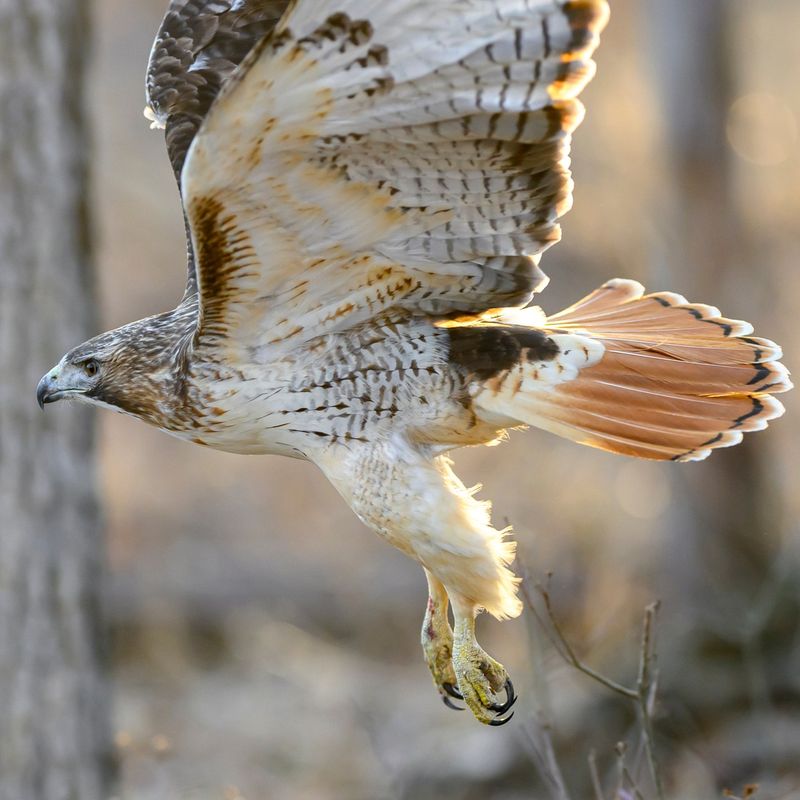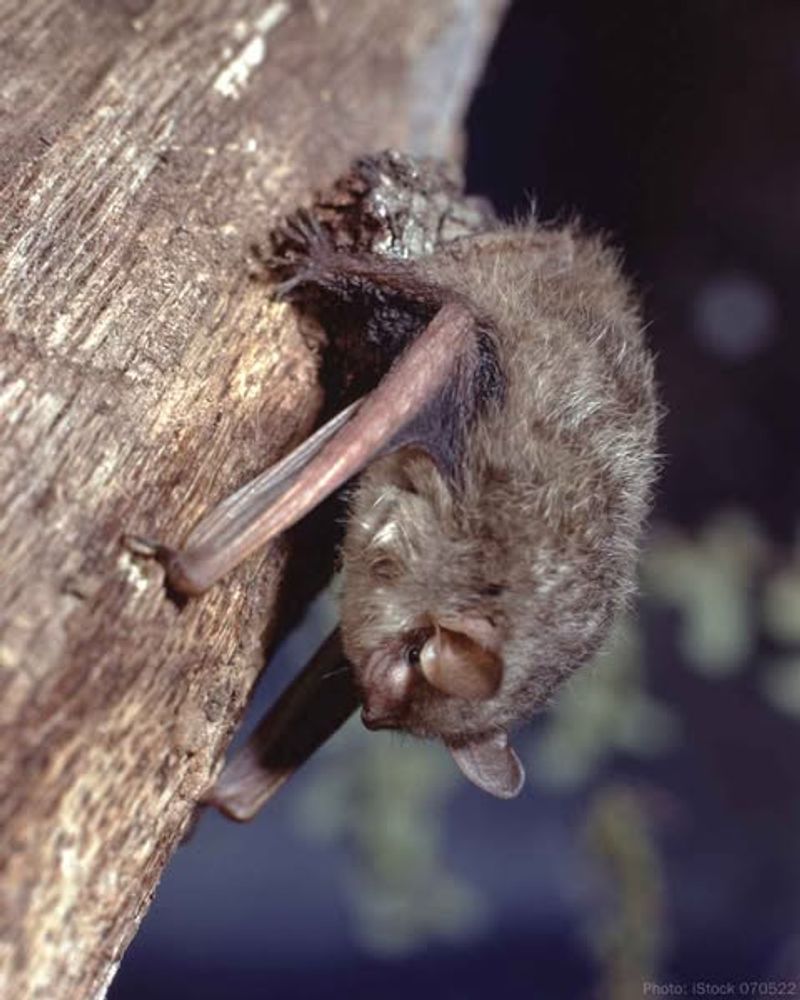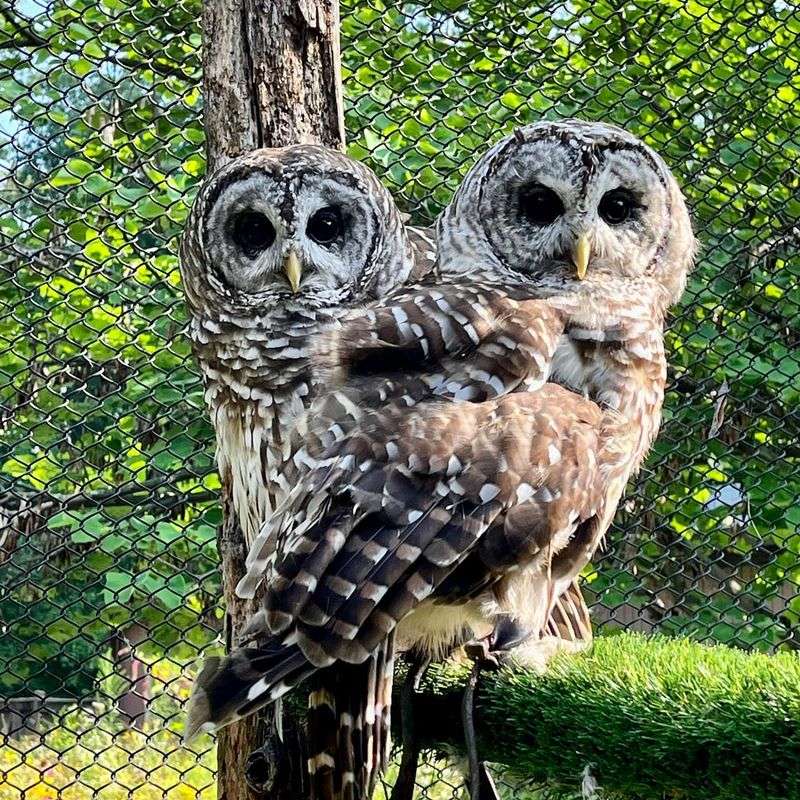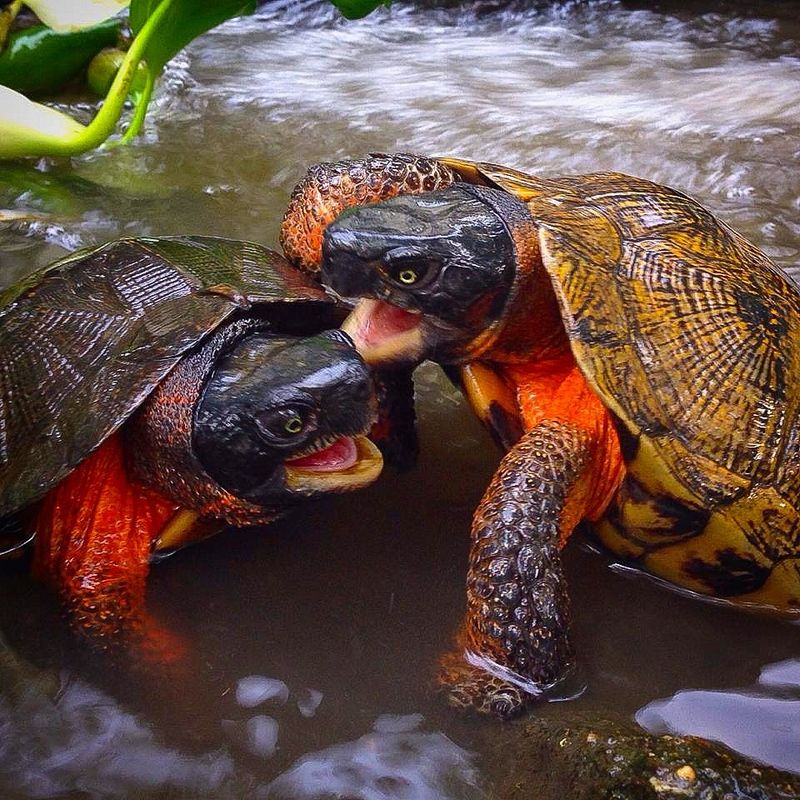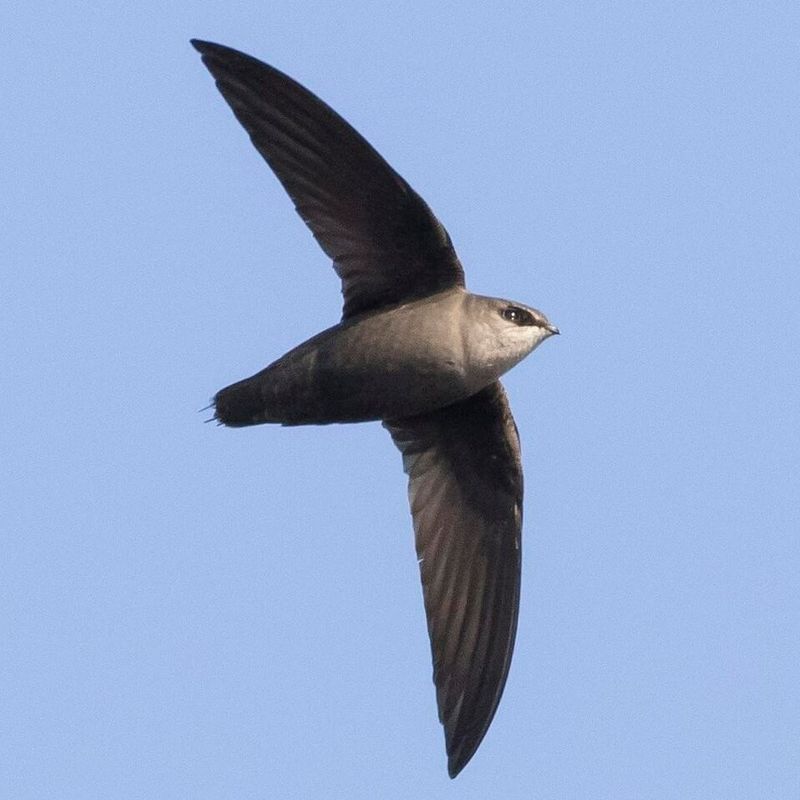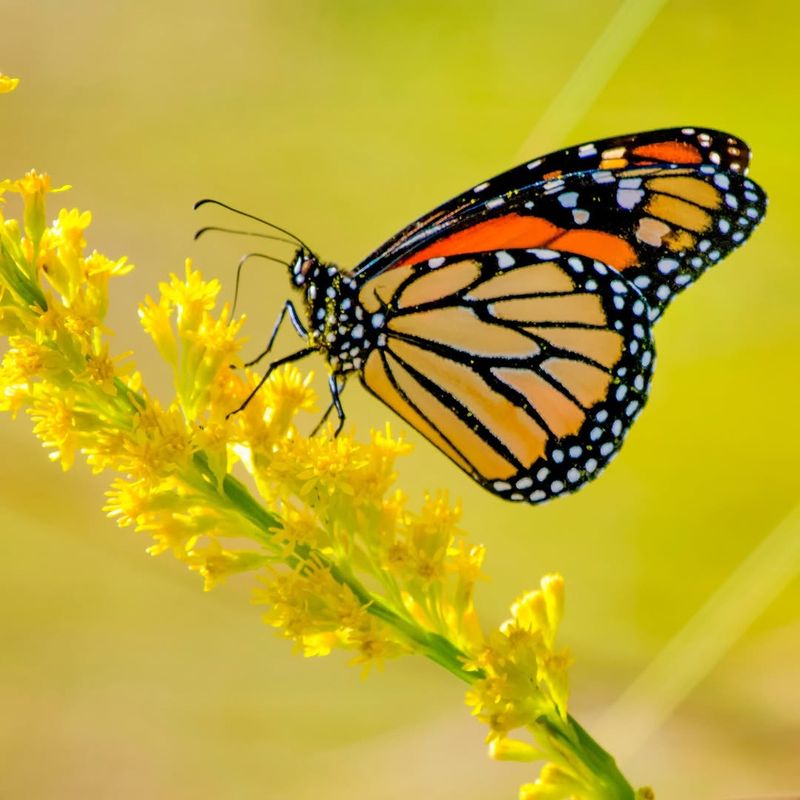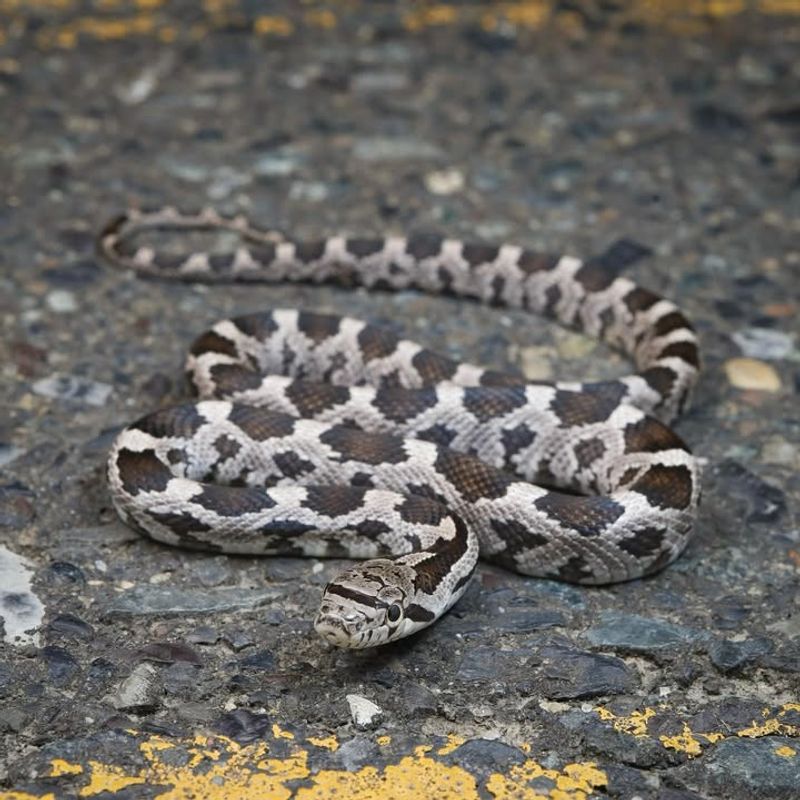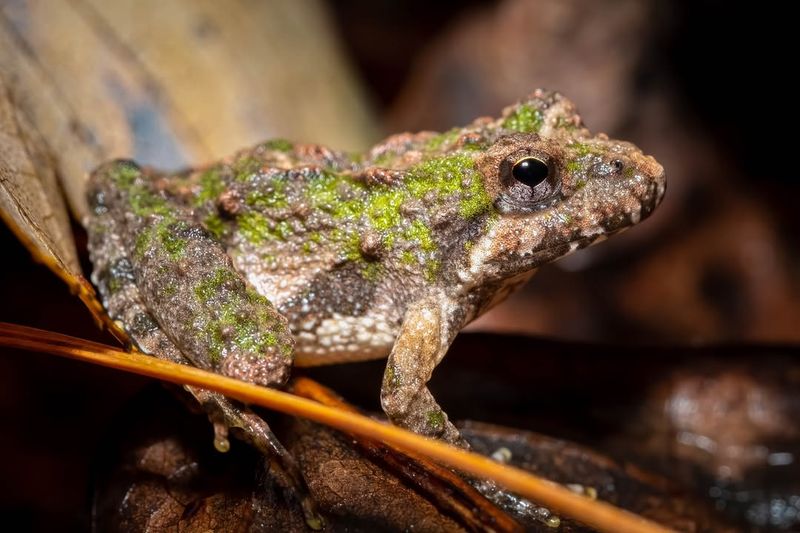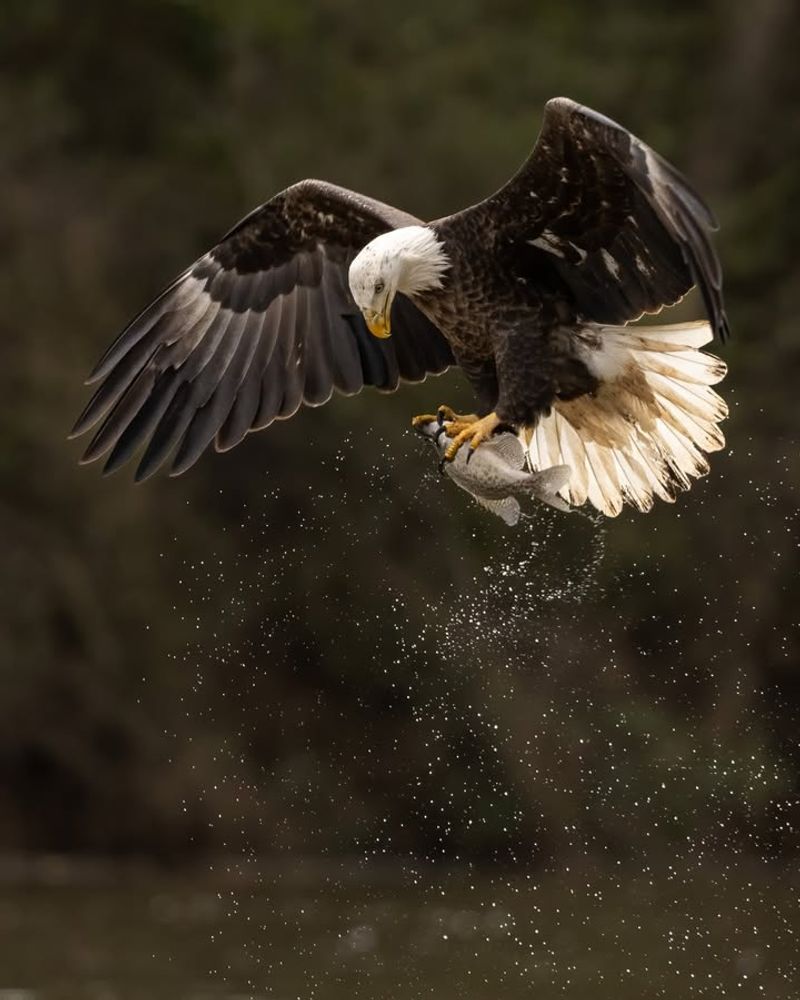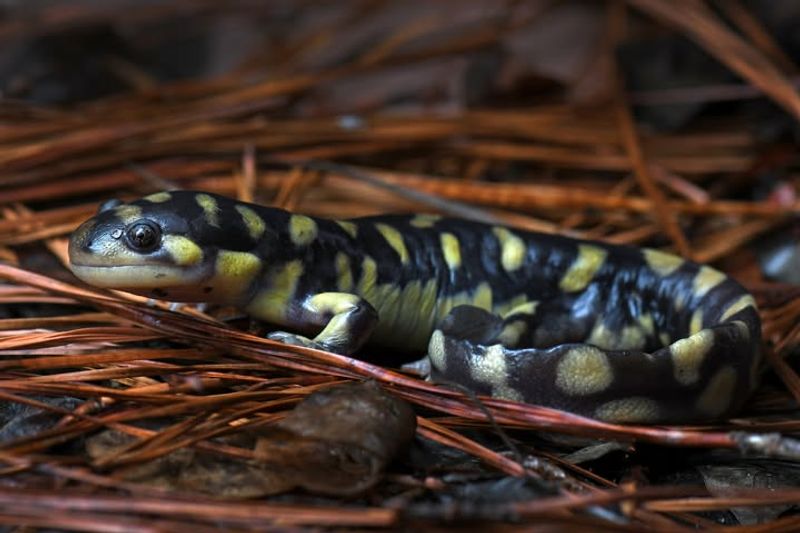New Jersey yards may feel like your personal kingdom, but when certain creatures move in, the law suddenly calls the shots. From tiny songbirds to quiet reptiles, a surprising number of wild residents hold more legal power than you might expect.
Before you even think about shooing, relocating, or “handling” an unwelcome visitor, it pays to know who’s protected—and why. These 13 creatures may be small, but in the eyes of the state, they carry a whole lot of weight.
1. Eastern Box Turtle
Slow-moving and ancient-looking, box turtles have been roaming New Jersey yards for millions of years. State law makes it illegal to capture, harm, or keep them as pets without special permits.
If you spot one crossing your lawn, simply let it continue on its way. Moving them to a different location can actually harm their survival since they have specific home territories.
Garden-friendly and harmless, they munch on slugs and berries while minding their own business.
2. Red-Tailed Hawk
With wingspans reaching four feet, these magnificent raptors patrol suburban skies hunting for rodents and rabbits. Federal and New Jersey state protections make disturbing their nests a criminal offense carrying hefty fines.
You might hear their distinctive screaming call echoing through your neighborhood. Despite their fierce hunting skills, they keep pest populations under control naturally.
Property owners must leave active nests alone until young hawks have fledged and moved on naturally.
3. Little Brown Bat
Tiny mosquito-eating machines, these bats devour thousands of insects every single night during summer months. Protected under New Jersey state endangered species laws, they face serious threats from habitat loss and disease.
Finding them roosting in your attic requires calling licensed wildlife professionals for humane removal. Harming them violates wildlife protection statutes.
Installing bat houses gives them alternative shelter while keeping your home bat-free and your yard mosquito-light.
4. Barred Owl
Famous for their haunting who-cooks-for-you call, barred owls have moved into suburban areas as forests shrink. Strict federal protections under the Migratory Bird Treaty Act shield them from harassment or harm.
Spotting one hunting in your yard at dusk means your property has a healthy ecosystem. They control rodent populations better than any poison ever could.
Keep outdoor cats inside during twilight hours when these skilled hunters are most active.
5. Wood Turtle
Sporting sculptured shells and bright orange necks, wood turtles rank among New Jersey’s most threatened reptiles. State endangered species laws impose serious penalties for collecting, selling, or harming them.
Sometimes they wander into yards near streams and wetlands during breeding season. Creating brush piles and leaving natural areas unmowed helps support their dwindling populations.
Report sightings to wildlife officials who track remaining populations across the state.
6. Chimney Swift
Looking like flying cigars, these acrobatic birds spend almost their entire lives airborne catching insects. They nest exclusively in chimneys and hollow trees, earning them federal protection.
Homeowners cannot remove active nests or block chimneys during nesting season from spring through early fall. Their constant chattering from inside chimneys signals babies are being raised.
Once youngsters fledge in late summer, you can cap your chimney until next spring arrives again.
7. Monarch Butterfly
Brilliant orange wings carry these delicate travelers thousands of miles to Mexico each fall. While not officially listed as endangered yet, harming monarchs or destroying their milkweed host plants violates various environmental protection policies.
Planting native milkweed species helps support their incredible migration journey. Avoid pesticides that harm caterpillars munching on leaves in your garden beds.
Watching their transformation from striped caterpillar to chrysalis to butterfly never gets old.
8. Timber Rattlesnake
Before you panic, know that these shy serpents avoid people whenever possible and rarely venture into open yards. Listed as endangered in New Jersey, harming one brings criminal charges and substantial fines.
Found mainly in northern rocky areas, they control rodent populations around properties bordering wild spaces. Give them wide berth and they will quickly retreat into cover.
Keep grass trimmed and remove brush piles near homes to discourage unwanted visits from any snake species.
9. Great Blue Heron
Standing over four feet tall, these prehistoric-looking waders visit backyard ponds hunting for fish and frogs. Protected under federal migratory bird laws, even disturbing their fishing activities constitutes a violation.
Pond owners sometimes get frustrated watching herons feast on expensive koi fish. However, netting your pond provides legal protection for your fish without harming protected birds.
Their patient hunting style and sudden lightning-quick strikes make them fascinating to observe from a distance.
10. Northern Cricket Frog
Smaller than a quarter, these tiny amphibians have vanished from much of their former range across the state. Endangered species protections make harming them or destroying their wetland habitats illegal.
Their distinctive clicking call sounds more like pebbles knocking together than actual cricket chirps. Maintaining natural pond edges and avoiding pesticides helps their struggling populations.
Finding one hopping through damp grass means your yard provides critical habitat for this disappearing species.
11. Bald Eagle
Once nearly extinct, these national symbols have made a remarkable comeback throughout New Jersey. Multiple layers of federal and state laws protect eagles, their nests, and even their feathers.
Nesting pairs require large buffer zones free from human disturbance during breeding season. Property owners near eagle nests must follow strict guidelines about construction and tree removal.
Watching them soar overhead or snatch fish from nearby waters reminds us that conservation efforts really do work.
12. Eastern Tiger Salamander
Sporting bold yellow stripes on jet-black skin, these secretive amphibians spend most of their lives underground. State endangered species status makes possessing or harming them a prosecutable offense.
They emerge during rainy spring nights to breed in vernal pools and temporary wetlands. Building projects that destroy these seasonal wetlands require special permits and mitigation efforts.
Leaving fallen logs and maintaining damp areas in your yard creates essential habitat for these declining creatures.
13. Bobcat
Elusive and rarely seen, bobcats have quietly returned to New Jersey after being nearly eliminated decades ago. Game animal status means only licensed hunters can harvest them during specific seasons with strict limits.
Most homeowners never know bobcats pass through their yards at night hunting rabbits and mice. Securing garbage, bringing pet food inside, and keeping small pets indoors prevents negative encounters.
Finding their distinctive tracks in snow or mud confirms these wild cats are reclaiming their historic territory.



